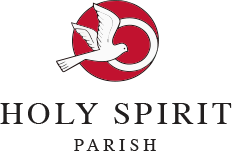
The Real Presence (Part 4)
by the Committee on Doctrine of the USCCB
Does the bread cease to be bread and the wine cease to be wine?
Yes. In order for the whole Christ to be present—body, blood, soul, and divinity—the bread and wine cannot remain, but must give way so that His glorified Body and Blood may be present. Thus, in the Eucharist the bread ceases to be bread in substance, and becomes the Body of Christ, while the wine ceases to be wine in substance, and becomes the Blood of Christ. As St. Thomas Aquinas observed, Christ is not quoted as saying, “This bread is my body,” but He said, ” This is my body” (Summa Theologiae, III q. 78, a. 5).
Is it fitting that Christ’s Body and Blood become present in the Eucharist under the appearances of bread and wine?
Yes, for this way of being present corresponds perfectly to the sacramental celebration of the Eucharist. Jesus Christ gives himself to us in a form that employs the symbolism inherent in eating bread and drinking wine. Furthermore, being present under the appearances of bread and wine, Christ gives himself to us in a form that is appropriate for human eating and drinking. Also, this kind of presence corresponds to the virtue of faith, for the presence of the Body and Blood of Christ cannot be detected or discerned by any way other than faith. That is why St. Bonaventure affirmed: “There is no difficulty over Christ’s being present in the sacrament as in a sign; the great difficulty is in the fact that He is really in the sacrament, as He is in heaven. And so, believing this is especially meritorious” (In IV Sent., dist. X, P. I, art. un., qu. I). On the authority of God who reveals himself to us, by faith we believe that which cannot be grasped by our human faculties (cf. Catechism, no. 1381).



 © 2021 Holy Spirit Parish
© 2021 Holy Spirit Parish